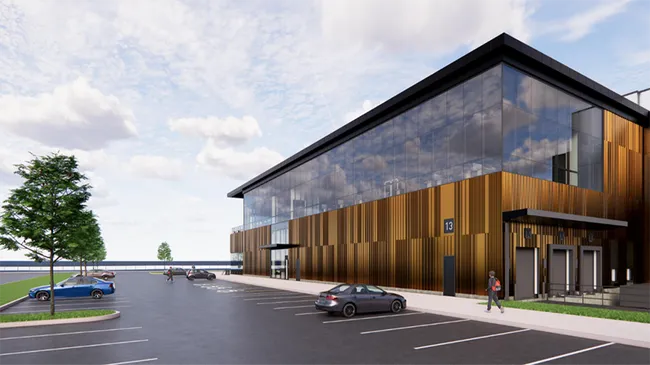Microsoft Pioneers Sustainable Data Centers with Cross-Laminated Timber
By admin | Nov 03, 2024 | 2 min read

In a groundbreaking effort to reduce carbon emissions, Microsoft is testing the use of fire-resistant cross-laminated timber (CLT) for constructing its first wood-based data centers near a northern Virginia suburb. This initiative aligns with the company’s ambitious climate goals, which include becoming carbon negative by 2030 and offsetting all emissions since its founding by 2050.
Addressing Carbon Emissions in Data Centers
Traditional data center construction primarily relies on steel and concrete, both of which are significant sources of carbon emissions. Microsoft’s new project seeks to challenge this norm. By integrating CLT with conventional materials, Microsoft aims to cut embodied carbon emissions by 35% compared to typical steel constructions and by 65% when measured against standard concrete buildings.
Despite progress in achieving its climate objectives, Microsoft has observed a 30.9% increase in indirect emissions from its data centers over the past three years, largely due to the processes involved in material extraction, manufacturing, and transportation. This highlights the urgency for innovative solutions in the tech giant's sustainability strategy.
Supporting Sustainable Innovations
Microsoft's commitment to sustainability is bolstered by its $1 billion Climate Innovation Fund, which has already invested $761 million in scalable environmental projects. As part of its efforts, Microsoft is collaborating with several green building material companies. Among these partnerships is one with Sweden’s Stegra, which is developing a hydrogen-based steel production process that emits water vapor rather than carbon dioxide, potentially reducing emissions by up to 95%.
Additionally, Microsoft is working with Boston Metal, which utilizes renewable electricity to produce steel while releasing oxygen instead of carbon dioxide. To further lessen its dependence on traditional cement, Microsoft has teamed up with companies like CarbonCure, which captures CO₂ to strengthen concrete, and Prometheus Materials, which creates zero-carbon cement using microalgae. A pilot of Prometheus’s cement will be conducted at Microsoft’s Virginia data centers to evaluate its durability.
A Catalyst for Change
Thomas Hooker, a structural engineer at Thornton Tomasetti working alongside Microsoft, noted that the company’s significant scale positions it as a potential market mover in sustainable building practices. Microsoft’s influence could help accelerate the adoption of innovative technologies in construction, making them more widely available and implemented across the industry.
Conclusion
As Microsoft explores the integration of cross-laminated timber in its data centers, the initiative represents a significant step toward greener technology and highlights the potential for wood as a sustainable alternative in building infrastructure. This project not only aims to mitigate the environmental impact of data centers but also sets a precedent for other companies to follow in the quest for sustainable innovation. As the tech industry continues to grow, embracing such practices could play a crucial role in reducing overall carbon footprints and achieving broader climate goals.
Comments
Please log in to leave a comment.




No comments yet. Be the first to comment!